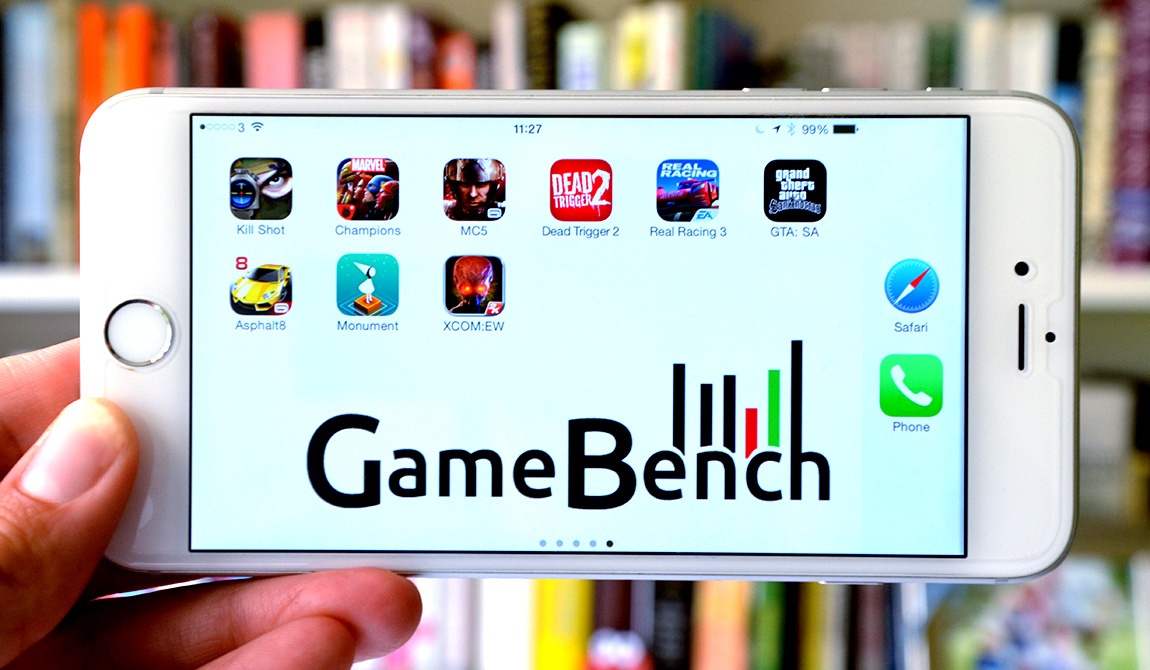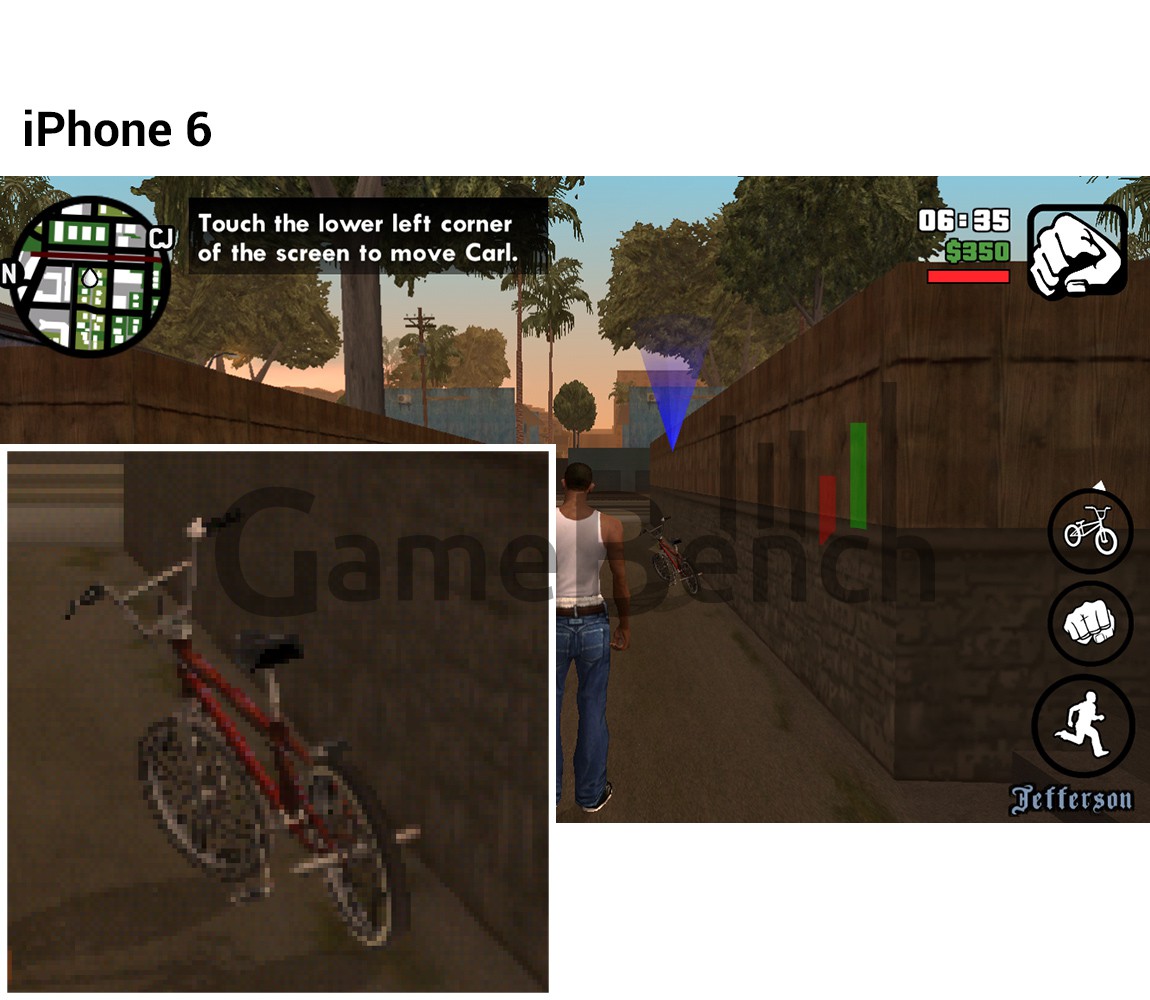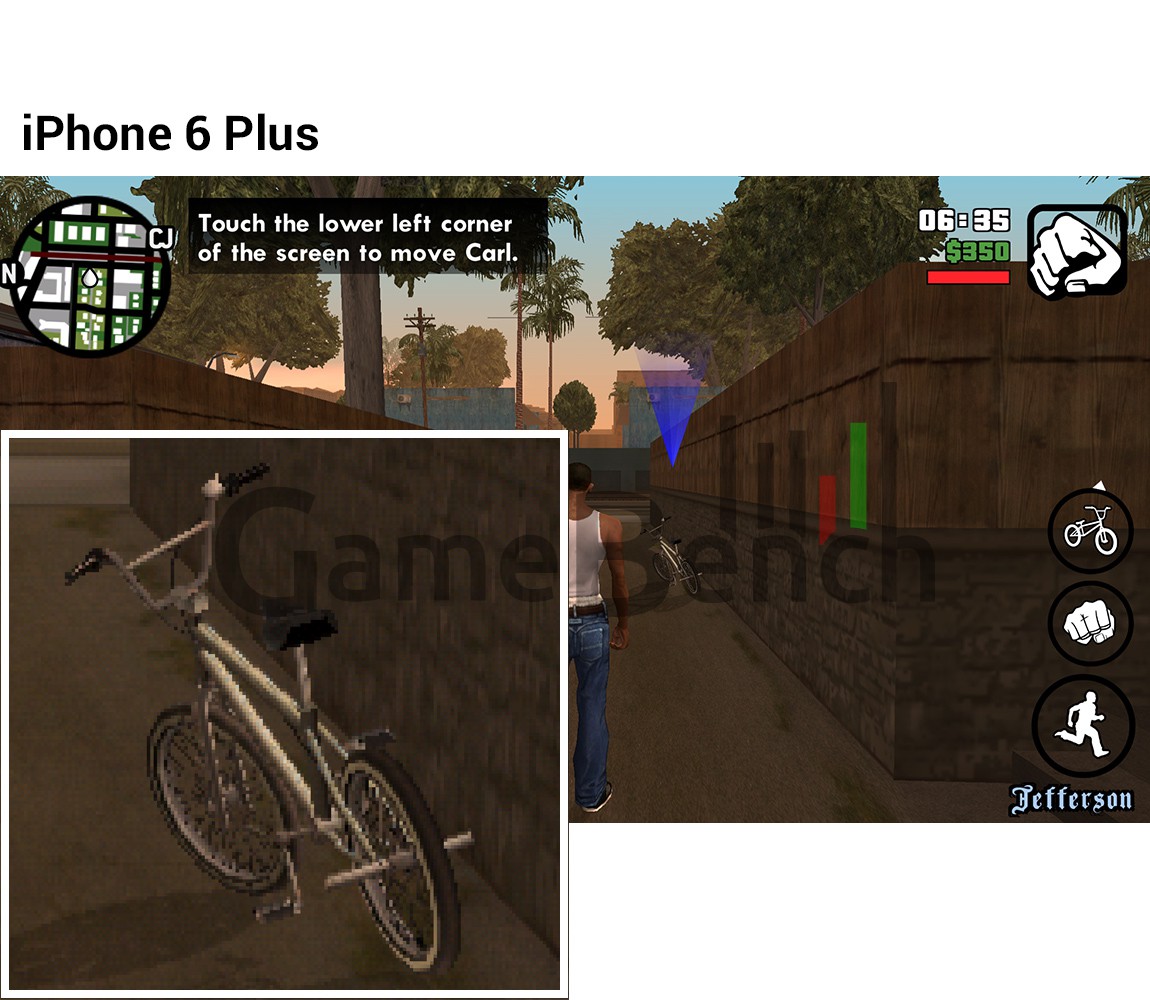
- GameBench Staff
- 30. June 2015
-
0 Comments
Back in April, we published a comparison of the real-world gaming performance of the Apple iPhone 6 and Samsung Galaxy S6. This was the first cross-platform analysis of its kind, revealing significant differences in the way each phone handled a sample of 10 popular mobile games. However, this report didn’t include the iPhone 6 Plus, which we felt belonged in different commercial category to the two more mainstream rivals.
We’ve since had numerous requests for iPhone 6 Plus performance data, and we’ve just completed our testing, so we figured its about time we made the numbers public. This blog post should therefore be considered an addendum, and we recommend that you download the original Battle of the Sixes report in order to get the full picture -- including a better understanding of GameBench’s approach and methodology (which is very different to the way traditional mobile benchmarks work).
Processing more pixels
In case you missed it, our original data showed that the iPhone 6 came out on top, with the most fluid and stable frame rates. The Galaxy S6 wasn’t far behind, and it beat the other Android flagships in our test, but it was held back by a number of factors -- likely including its extremely high resolution (1440p) and the fact that some game developers deliberately capped performance on this device in order to prevent excessive battery drain or overheating.
The 1080p display resolution of iPhone 6 Plus is significantly higher than that of the iPhone 6, making it a closer match to top-end Android phones like the GS6. Now, we can't assume that developers will always render their games at exactly 1080p: they may render at 750p and upscale, or equally they may render at 1242p and downscale. (For what's worth, games on the GS6 aren't necessarily rendered at the device's display resolution etiher.) But overall, assuming that many developers will try to exploit the iPhone 6 Plus's higher resolution, this leads to an obvious question: can Apple’s phablet maintain the same fluid and stable frame rates that we experienced on the regular iPhone 6?
If you rely solely on traditional synthetic benchmarks, then you'd probably guess that the answer is "no." Synthetic benchmarks are designed to push devices to their limits and therefore tend to be extremely punishing at higher resolutions. For example, GFX Bench's onscreen Manhattan test suggests that graphical performance on the iPhone 6 Plus lags behind the smaller iPhone 6 to the tune of around 30 percent. (Note, GFX Bench is even more harsh on the Galaxy S6 for the same reason).
But GameBench allows us to test all of this directly, using real-world games. Our tool sits in the background while a game is being played and it measures key metrics relating to the smoothness of the gameplay experience: median frame rate, minimum frame rate and overall frame rate stability. Our results are summarised below, starting with average scores across all ten games in our test basket.
Results
The data shows that the iPhone 6 Plus does indeed fall behind its smaller sibling, but the lag is nowhere near as severe as synthetic benchmarks might suggest. The iPhone 6 Plus performs strongly enough to take second place in our ranking, staying just above the Galaxy S6. Of course, unlike with synthetic benchmarks, we can't claim to be making an apples-to-apples comparison at a technological level -- after all, we never know for sure what resolution a particular developer has decided to render their game at, and we realise this rendering resolution will often be different for each device. Nevertheless, in terms of simple usability -- i.e., what a regular consumer experiences when they load up a game on the phone they just bought -- we can say that the iPhone 6 Plus handles our test games just fine. (We'll come back to the issue of resolution and image quality in just a moment.)
Overall, we’d conclude that the game developers behind the titles we tested have built a sufficient margin of safety into the performance of their iOS versions, such that their games can still play at a relatively steady frame rate even on the iPhone 6 Plus’s higher resolution. This makes sense when you consider that these iOS games may have been built to run on much lower-spec iPhones like the 5 or 5C. Meanwhile, for a range of possible reasons (which may have just as much to do with software as hardware), these developers were unable to maintain the same steadiness in their Android versions -- even on the Galaxy S6, which is the strongest Android contender we’ve tested so far.
On the other hand, our data also show that there are brief moments in certain games when the iPhone 6 Plus struggles more than the iPhone 6 and the GS6. These performance bottlenecks were fleeting enough that they didn't drag down median fps (our primary metric) enough to affect the ranking, but they were still quite signficant. You can see this by looking at the black bar in the charts, representing minimum frame rate. The main games in question were Kill Shot, Modern Combat 5 and -- worst of all -- XCOM: Enemy Within. (Though it’s worth mentioning that this latter title shows very erratic frame rate dips on all our test devices, frequently falling below 20fps, so it shouldn’t cause us to be too harsh on the iPhone 6 Plus specifically.)
A fair comparison
Our testing methodology came in for some flack after our last report. Some readers criticised us for comparing devices that had such different resolutions, perhaps feeling that the Galaxy S6 deserved to rank top because it had a much higher resolution the iPhone 6 and yet achieved only slightly worse frame rates.
We actually dealt with this concern in the report itself, making it clear that our focus is on comparing the gameplay experience offered by devices that are commercially matched -- i.e., devices that rival each other in the marketplace -- even if they aren’t technologically matched. Indeed, if a very high resolution (or any other factor) contributes to a more jerky or laggy gameplay experience on a particular phone, then we feel these frame rate figures deserve to be revealed so that they can feed into a consumer’s buying decision.
Now that we’ve completed testing of the iPhone 6 Plus, we believe even more strongly that the impact of resolution on today’s mobile games is subjective and best left up to the individual consumer to judge. This is because our own testers reported no appreciable difference between the image quality on the iPhone 6, iPhone 6 Plus or Galaxy S6 -- even though the Galaxy S6 technically has the highest resolution and so should be expected to always produce a sharper and more detailed image.
In fact, even if we zoom right in on a screenshot from each phone, seizing on a tiny game object that occupies just a few millimetres and is barely noticeable to the gamer, the GS6 fails to achieve a consistent advantage. Yes, some games do show more detail on this phone under a microscope -- notably Dead Trigger 2, Modern Combat 5 and XCOM: Enemy Within. But some other titles, such as Aphalt 8, Real Racing 3 and GTA: San Andreas, show the iPhone 6 Plus to have equivalent or slightly superior detail. This tells us that the display resolution of a device isn't the sole determinant of image quality inside a real game. We'll conclude this article with an example of this phenomenon, using screenshots from Grand Theft Auto: San Andreas. You also can see a full selection of zoomed screenshots, or download the raw screenshot files in order to make up your own mind.



